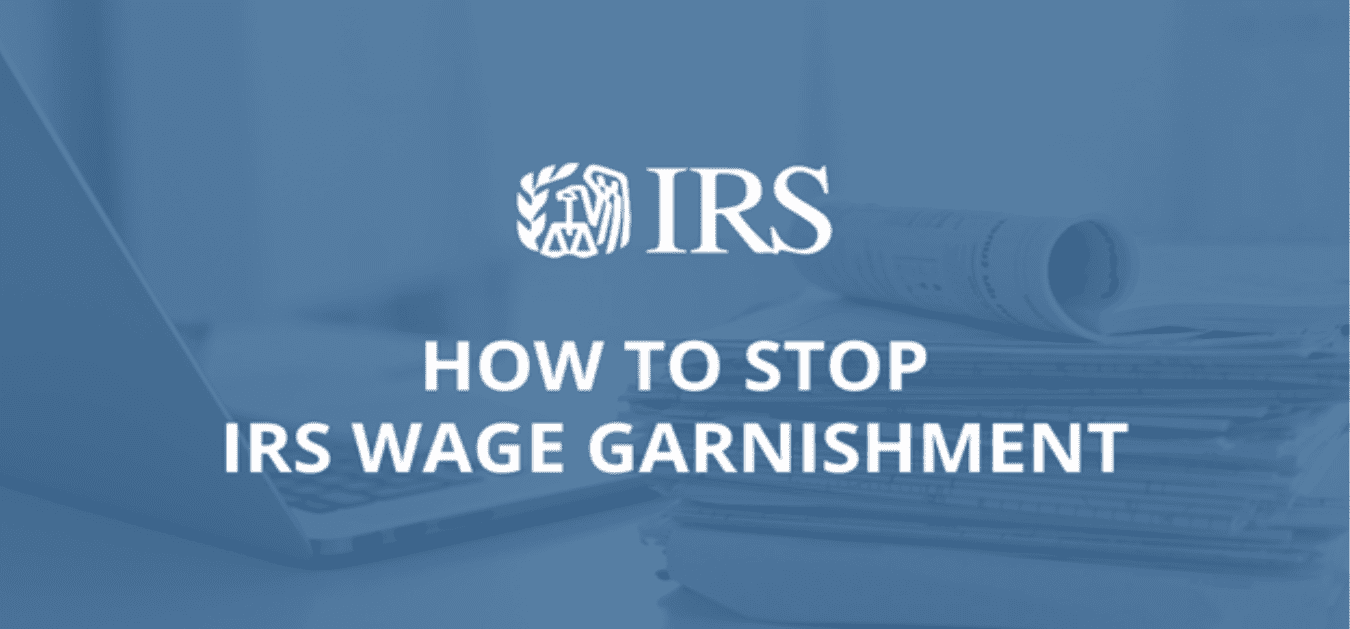

Finance
How To Stop An IRS Levy
Published: November 1, 2023
Learn effective strategies to stop an IRS levy and regain control of your finances. Discover expert advice and practical tips for dealing with IRS levies.
(Many of the links in this article redirect to a specific reviewed product. Your purchase of these products through affiliate links helps to generate commission for LiveWell, at no extra cost. Learn more)
Table of Contents
- Introduction
- What is an IRS Levy?
- Understanding the Consequences of an IRS Levy
- Steps to Stop an IRS Levy
- Hiring a Tax Professional for Assistance
- Negotiating an Offer in Compromise
- Requesting an Installment Agreement
- Filing for Innocent Spouse Relief
- Seeking Collection Due Process Hearing
- Appealing an IRS Levy
- Conclusion
Introduction
Welcome to the world of finance – a realm of numbers, investments, and potential profits. But amidst the excitement of building wealth, there are certain challenges that one might encounter. One such challenge is dealing with the Internal Revenue Service (IRS) and its levies.
When the IRS issues a levy, it means they have the authority to seize your assets to satisfy a tax debt. This can be a distressing situation, as it can have significant financial consequences and disrupt your life. However, there are ways to stop an IRS levy and regain control of your finances.
In this article, we will explore the different steps you can take to put an end to an IRS levy. We will discuss various strategies, including hiring a tax professional, negotiating an offer in compromise, requesting an installment agreement, filing for innocent spouse relief, seeking a collection due process hearing, and appealing an IRS levy decision. Let’s dive in and learn how to navigate these processes effectively and protect yourself from the potentially devastating impact of an IRS levy.
Note that while the steps outlined here can provide valuable guidance, it is essential to consult with a qualified tax professional who can analyze your specific situation and provide personalized advice tailored to your needs. Let’s now explore what an IRS levy is and understand its consequences.
What is an IRS Levy?
An IRS levy is a legal action taken by the Internal Revenue Service to collect unpaid tax debts. It is a powerful tool that allows the IRS to seize your assets, such as bank accounts, wages, real estate, vehicles, and even retirement accounts, to satisfy the outstanding tax debt.
The process begins with the IRS sending you a notice of intent to levy, which serves as a warning that they are considering taking enforcement action against you. This notice gives you an opportunity to resolve the tax debt before the levy is implemented.
If you fail to respond or arrange for payment, the IRS can proceed with the levy. They will issue a final notice of intent to levy, specifying the assets they intend to seize. Once the levy is in effect, the IRS can freeze your bank accounts, garnish your wages, or place a lien on your property.
The objective of an IRS levy is to force taxpayers to take action and settle their tax debts. The IRS has broad powers when it comes to levies, and they can be a tremendous financial burden for individuals and businesses alike.
It’s important to note that an IRS levy is not the same as a tax lien. A tax lien is a legal claim against your property, serving as a security interest for the IRS’s potential claim. On the other hand, an IRS levy is the actual seizure and sale of your assets to satisfy the tax debt.
Now that we have a clear understanding of what an IRS levy entails, let’s delve into the potential consequences it can have on your financial well-being.
Understanding the Consequences of an IRS Levy
An IRS levy can have a profound impact on your financial situation and overall well-being. It is crucial to be aware of the potential consequences to take the necessary steps to stop the levy and mitigate its effects.
One of the most immediate consequences of an IRS levy is the freezing of your bank accounts. The IRS has the authority to take funds from your bank accounts to satisfy the tax debt. This can leave you with limited access to your own money, making it challenging to meet daily expenses and financial obligations.
In addition to freezing your bank accounts, the IRS can also garnish your wages. They can contact your employer and legally require them to withhold a portion of your paycheck, redirecting it towards the tax debt. This can result in a significant reduction in your take-home pay, making it difficult to meet your financial commitments.
If you own real estate or other valuable assets, the IRS can place a lien on them. A tax lien serves as a claim against your property, making it difficult to sell or refinance without first dealing with the tax debt. This can hinder your ability to access the equity in your property and can have long-term implications for your financial stability.
Another consequence of an IRS levy is the potential damage to your credit score. If the IRS reports the levy to credit bureaus, it can negatively impact your creditworthiness and make it challenging to secure loans or credit in the future. This can limit your financial options and make it hard to recover financially.
Furthermore, an IRS levy can cause immense stress and anxiety. Dealing with financial difficulties and the fear of losing your assets can take a toll on your mental well-being. It is essential to prioritize your mental health during this challenging time and seek support from professionals or support networks.
Now that we have examined the possible consequences of an IRS levy, let’s explore the steps you can take to stop it and regain control of your finances.
Steps to Stop an IRS Levy
Dealing with an IRS levy can be overwhelming, but there are steps you can take to stop the levy and regain control of your financial situation. Here are some crucial steps to consider:
- Hire a Tax Professional: Seeking the assistance of a qualified tax professional is highly recommended when dealing with an IRS levy. They have the knowledge and experience to navigate the complexities of the tax system and negotiate on your behalf.
- Negotiate an Offer in Compromise: An Offer in Compromise (OIC) is an agreement between you and the IRS to settle your tax debt for less than the full amount owed. This option is available if you can demonstrate that paying the full amount would create financial hardship.
- Request an Installment Agreement: If you are unable to pay your tax debt in full, you can request an installment agreement. This allows you to make monthly payments over an extended period of time to satisfy your tax obligations.
- File for Innocent Spouse Relief: If you are facing an IRS levy due to the tax debt of your spouse, you may be eligible for Innocent Spouse Relief. This relieves you from the responsibility of the tax debt if you can prove that you were unaware and had no reason to know about the incorrect tax return.
- Seek a Collection Due Process Hearing: Requesting a Collection Due Process (CDP) hearing is an option if the IRS has issued a final notice of intent to levy. This allows you to present your case before an impartial appeals officer and provide evidence to support your claim.
- Appeal an IRS Levy: If your efforts to resolve the issue through negotiation and other means have been unsuccessful, you have the right to appeal the IRS levy decision. This involves submitting a written protest outlining your reasons for disagreeing with the levy.
Each of these steps requires careful consideration and due diligence. It is crucial to seek professional advice and carefully assess your options before proceeding. Remember, the goal is to resolve your tax debt and stop the levy while minimizing the financial impact on your life.
Now that we have explored the steps to stop an IRS levy, it is important to understand the benefits of hiring a tax professional to assist you in this process.
Hiring a Tax Professional for Assistance
Dealing with the complexities of an IRS levy can be daunting and overwhelming, which is why it is highly recommended to hire a tax professional for assistance. A tax professional, such as a tax attorney or enrolled agent, can provide you with invaluable guidance and support throughout the process. Here are some reasons why hiring a tax professional is beneficial:
- Expert Knowledge and Experience: Tax professionals have in-depth knowledge and understanding of the tax laws and regulations. They are familiar with the intricacies of the IRS levy process and can guide you through the necessary steps to stop the levy effectively.
- Negotiation Skills: Tax professionals possess strong negotiation skills that can be crucial in dealing with the IRS. They can advocate on your behalf and work towards finding a favorable resolution to your tax debt situation.
- Strategic Planning: A tax professional can analyze your specific circumstances and develop a strategic plan to address your tax debt and stop the levy. They can help you explore various options, such as applying for an Offer in Compromise or setting up an installment agreement, and determine the best course of action.
- Protection of Your Rights: The IRS levy process involves complex legal procedures, and it’s crucial to have someone who understands your rights and can protect them. A tax professional can ensure that your rights are upheld throughout the process, providing you with peace of mind.
- Reduction of Stress and Burden: Dealing with an IRS levy can be incredibly stressful. By hiring a tax professional, you can offload the burden of managing your tax debt and levy resolution to an experienced professional who will handle the process on your behalf.
It’s important to choose a tax professional who is reputable, experienced, and specializes in tax resolution. Take the time to research and select a professional who has a track record of success in dealing with IRS levies.
While hiring a tax professional comes with a cost, the potential savings and benefits they can provide outweigh the expense. They can help you navigate the complex tax system, protect your rights, and find the best solution to stop the IRS levy and resolve your tax debt.
Now that we understand the benefits of hiring a tax professional, let’s explore the option of negotiating an Offer in Compromise to stop an IRS levy.
Negotiating an Offer in Compromise
One potential option for stopping an IRS levy is negotiating an Offer in Compromise (OIC). An Offer in Compromise is an agreement between you and the IRS to settle your tax debt for less than the full amount owed. It provides an opportunity for taxpayers with significant financial hardship to resolve their tax liabilities and move forward with a clean slate.
To qualify for an Offer in Compromise, you must demonstrate to the IRS that paying your tax debt in full would create a significant financial hardship. The IRS considers factors such as your income, expenses, assets, and future earning potential when evaluating your offer.
Here are the key steps involved in negotiating an Offer in Compromise:
- Evaluation: The first step is to assess your financial situation and determine your eligibility for an Offer in Compromise. You will need to gather documentation to support your claim, including income statements, expense records, and asset valuations. Consulting with a tax professional during this stage can be beneficial, as they can guide you through the process and help you present a strong case.
- Submission of Offer: Once you have prepared your offer, you will need to complete Form 656, Offer in Compromise. This form requires detailed financial information and an explanation of why you are unable to pay the full amount owed. You will also need to include a non-refundable application fee and an initial payment if applicable.
- Review and Negotiation: After submitting your offer, the IRS will review your proposal and evaluate its merits. They may request additional documentation or clarification during this process. It is essential to be responsive and work with the IRS to provide any requested information. Depending on the complexity of your case, the negotiation process can take several months.
- Acceptance or Rejection: The IRS will either accept or reject your Offer in Compromise. If accepted, you will need to adhere to the terms of the agreement, including making timely payments. If your offer is rejected, you have the right to appeal the decision within 30 days.
It’s important to note that negotiating an Offer in Compromise can be a complex and lengthy process. Working with a tax professional who specializes in tax resolution can significantly increase your chances of success. They can help you navigate the intricacies of the process, present a compelling case, and negotiate with the IRS on your behalf.
While an Offer in Compromise provides an opportunity to settle your tax debt for less, it is not a guarantee. The IRS has strict criteria for accepting offers, and not all taxpayers will qualify. Therefore, it’s important to consult with a tax professional to evaluate your eligibility and explore alternative options if needed.
Now that we have explored negotiating an Offer in Compromise, let’s discuss requesting an installment agreement as another option to stop an IRS levy.
Requesting an Installment Agreement
If you are unable to pay your tax debt in full, another option to stop an IRS levy is to request an installment agreement. An installment agreement allows you to make monthly payments over time to satisfy your tax obligations. This option can provide you with the flexibility to manage your tax debt while avoiding immediate seizure of your assets.
Here’s what you need to know about requesting an installment agreement:
- Evaluate Your Finances: Before requesting an installment agreement, assess your financial situation to determine the amount you can comfortably afford to pay each month. Review your income, expenses, and other financial obligations to create a realistic payment plan.
- Choose the Right Installment Agreement: The IRS offers different types of installment agreements, depending on the amount you owe and how quickly you can pay it off. The most common types include guaranteed, streamlined, and partial payment installment agreements. Consult with a tax professional to determine the most appropriate agreement for your circumstances.
- Complete Form 9465: To request an installment agreement, you will need to complete Form 9465, Installment Agreement Request. This form requires you to provide detailed information about your financial situation, including your income, expenses, and the amount you can afford to pay each month.
- Send the Request to the IRS: Once you have completed Form 9465, you can submit it to the IRS along with any required supporting documentation. You can choose to mail it or apply online using the IRS’s Online Payment Agreement tool.
- Await Approval: After submitting your installment agreement request, the IRS will review your application and determine whether to approve or deny it. In some cases, they may request additional information or modify the terms of the agreement. It’s important to be prompt in responding to any requests from the IRS and provide all necessary documentation.
- Make Timely Payments: If your installment agreement is approved, it is vital to make your monthly payments on time as agreed. Failure to do so could result in the cancellation of the agreement and potential enforcement actions, such as an IRS levy.
By requesting an installment agreement, you can proactively manage your tax debt and prevent the immediate seizure of your assets. However, it’s essential to remember that interest and penalties may continue to accrue on your unpaid tax balance, and there may be fees associated with setting up the installment agreement.
Consulting with a tax professional can help you navigate the installment agreement process, negotiate the best terms, and ensure that you are in compliance with the IRS requirements. They can also provide guidance in the event that your financial circumstances change, and you need to modify your existing agreement.
Now that we have explored requesting an installment agreement, let’s discuss filing for innocent spouse relief as another option for stopping an IRS levy.
Filing for Innocent Spouse Relief
If you are facing an IRS levy due to a tax debt that belongs to your spouse or former spouse, you may be eligible for Innocent Spouse Relief. Filing for Innocent Spouse Relief can protect you from being held responsible for the tax debt, allowing you to stop the levy and avoid financial repercussions.
Here’s what you need to know about filing for Innocent Spouse Relief:
- Evaluate your Eligibility: To qualify for Innocent Spouse Relief, you must meet specific criteria set by the IRS. Generally, you need to prove that you had no knowledge or reason to know about the erroneous tax return, and it would be unfair to hold you accountable for the tax debt.
- Gather Supporting Documentation: Compile all relevant documents and evidence that demonstrate your lack of knowledge or involvement in the erroneous tax return. This may include financial records, communication records, and any other evidence that supports your claim.
- Complete Form 8857: To file for Innocent Spouse Relief, you will need to complete Form 8857, Request for Innocent Spouse Relief. This form requires detailed information about your tax filing history, your spouse’s involvement, and the basis for your claim.
- Submit the Request: Once you have completed Form 8857, you can submit it to the IRS along with any necessary supporting documentation. Make sure to follow the instructions provided by the IRS and keep copies of all documents for your records.
- Await IRS Determination: The IRS will review your request for Innocent Spouse Relief and make a determination based on the information provided. This process may take several months, and the IRS may contact you for additional information or clarification.
- Appeal if Necessary: If the IRS denies your request for Innocent Spouse Relief, you have the right to appeal the decision. You can submit a formal written appeal explaining why you believe the decision was incorrect or unjust.
Filing for Innocent Spouse Relief can be a complex process, and it’s advisable to seek guidance from a tax professional who specializes in this area. They can assist you in gathering the necessary documentation, completing the required forms accurately, and presenting a strong case to the IRS.
It’s important to note that filing for Innocent Spouse Relief does not automatically guarantee approval. The IRS carefully considers each case based on its individual merits. However, if your request is approved, it can provide substantial relief by preventing the levy and relieving you of the responsibility for the tax debt.
Now that we have explored filing for Innocent Spouse Relief, let’s discuss seeking a Collection Due Process Hearing as another option for stopping an IRS levy.
Seeking Collection Due Process Hearing
If you have received a final notice of intent to levy from the IRS, you have the right to seek a Collection Due Process (CDP) hearing. Requesting a CDP hearing can be an effective way to stop an IRS levy and present your case before an impartial appeals officer.
Here is what you need to know about seeking a Collection Due Process hearing:
- Act Promptly: It’s crucial to act quickly upon receiving the final notice of intent to levy. You have 30 days from the date of the notice to request a CDP hearing. Failing to submit the request within the given timeframe can result in losing your right to a hearing.
- Complete Form 12153: To request a Collection Due Process hearing, you must complete Form 12153, Request for a Collection Due Process or Equivalent Hearing. This form requires you to provide information about your tax case, the issues you want to address, and any supporting documentation.
- Specify Reasons for Dispute: In your request for a CDP hearing, clearly outline the reasons why you disagree with the proposed levy. Provide relevant facts, evidence, and legal arguments to support your case. A tax professional can assist you in preparing a strong argument.
- Submit the Request: Once you have completed Form 12153, mail it to the address specified on the final notice of intent to levy. Ensure that you retain a copy of the form and any supporting documents for your records.
- Prepare for the Hearing: After your request has been received, the IRS will schedule a CDP hearing. It is important to gather all relevant documents and be well-prepared to present your case before the appeals officer. Consult with a tax professional to help you prepare and increase your chances of a favorable outcome.
- Present your Case: During the CDP hearing, you will have the opportunity to present your arguments, provide evidence, and address any discrepancies or errors in the IRS’s case against you. The appeals officer will listen to your case and make a determination based on the evidence and applicable tax laws.
By seeking a Collection Due Process hearing, you can stop the IRS levy and have an opportunity to resolve your tax dispute in a fair and impartial setting. The appeals officer will review your case and consider all relevant information before making a decision.
It’s important to note that the appeals officer’s decision is final, and if you disagree with the outcome, you may have the option to pursue further legal action. Consulting with a tax professional during the CDP process can help you navigate the proceedings and increase your chances of a successful outcome.
Now that we have explored seeking a Collection Due Process hearing, let’s discuss the option of appealing an IRS levy.
Appealing an IRS Levy
If you disagree with the IRS’s decision to levy your assets, you have the right to appeal the decision. Appealing an IRS levy allows you to challenge their decision and present your case to an independent body for review. Here’s what you need to know about the appeals process:
- Act Quickly: To appeal an IRS levy, you must act promptly. Generally, you have 30 days from the date of the final notice of intent to levy to file an appeal. Failing to meet this deadline may result in the loss of your right to appeal.
- Understand the Options: The IRS offers two primary options for appeals: the Collection Appeal Program (CAP) and the Office of Appeals. The CAP is an informal process where you work directly with an IRS employee to resolve the issue. The Office of Appeals provides a formal and independent review of your case.
- Complete the Necessary Forms: To initiate the appeals process, you will need to complete the appropriate forms. For CAP, you generally need to submit a written request outlining your dispute and supporting documentation. For the Office of Appeals, you will need to complete Form 12203, Request for Appeals Review, and provide a detailed explanation of your disagreement.
- Gather Supporting Evidence: Along with your appeal, it’s crucial to gather any supporting documentation that strengthens your case. This may include financial records, legal documents, or correspondence with the IRS.
- Submit the Appeal: Once you have completed the necessary forms and compiled your supporting evidence, submit your appeal to the appropriate IRS office. Follow the instructions provided by the IRS and retain a copy of the appeal for your records.
- Prepare for the Appeals Conference: If your appeal is accepted, you will participate in an appeals conference with an independent appeals officer. Be prepared to present your case, explain your position, and provide evidence to support your claims. A tax professional can assist you in preparing for the conference and representing your interests effectively.
- Review the Appeals Decision: After the appeals conference, the appeals officer will review the evidence and make a decision. They will provide you with a written determination outlining their findings and any adjustments to your tax liabilities. If you agree with the decision, you can work with the IRS to resolve the matter. If you disagree, further legal action may be a consideration.
Filing an appeal can be a complex process, and having professional guidance can significantly enhance your chances of success. A tax professional can help you navigate the appeals process, ensure that all necessary forms are completed accurately, and present a compelling case on your behalf.
Remember, the appeals process is an opportunity to have an independent review of your case and potentially overturn the IRS levy. It is crucial to be organized, thorough, and proactive throughout the appeals process.
Now that we have explored the appeals process, let’s conclude our discussion on ways to stop an IRS levy.
Conclusion
Dealing with an IRS levy can be a stressful and overwhelming experience, but there are steps you can take to stop the levy and regain control of your financial situation. Whether it’s hiring a tax professional, negotiating an Offer in Compromise, requesting an installment agreement, filing for Innocent Spouse Relief, seeking a Collection Due Process hearing, or appealing the IRS levy decision, there are options available to address your tax debt.
When facing an IRS levy, it’s important to take action promptly. Seeking professional assistance from a tax professional who specializes in tax resolution can provide you with the guidance and expertise necessary to navigate the complexities of the IRS system effectively. They can help you evaluate your options, prepare documentation, and present your case in the best possible light.
Remember, the IRS levy process can have long-term consequences on your finances, credit score, and overall well-being. By taking proactive steps and exploring the appropriate options, you can potentially resolve your tax debt, stop the levy, and move towards a more stable financial future.
However, it’s essential to consider that every individual’s situation is unique, and what works for one person may not necessarily work for another. It’s crucial to seek personalized advice from a tax professional or attorney who can evaluate your specific circumstances and provide tailored recommendations.
In conclusion, by understanding the consequences of an IRS levy and taking the necessary steps, you can regain control of your financial life. Don’t navigate this process alone—seek professional assistance, explore your options, and take action to stop the levy and resolve your tax debt. With the right strategy and support, you can overcome this challenging situation and pave the way towards a more secure financial future.














